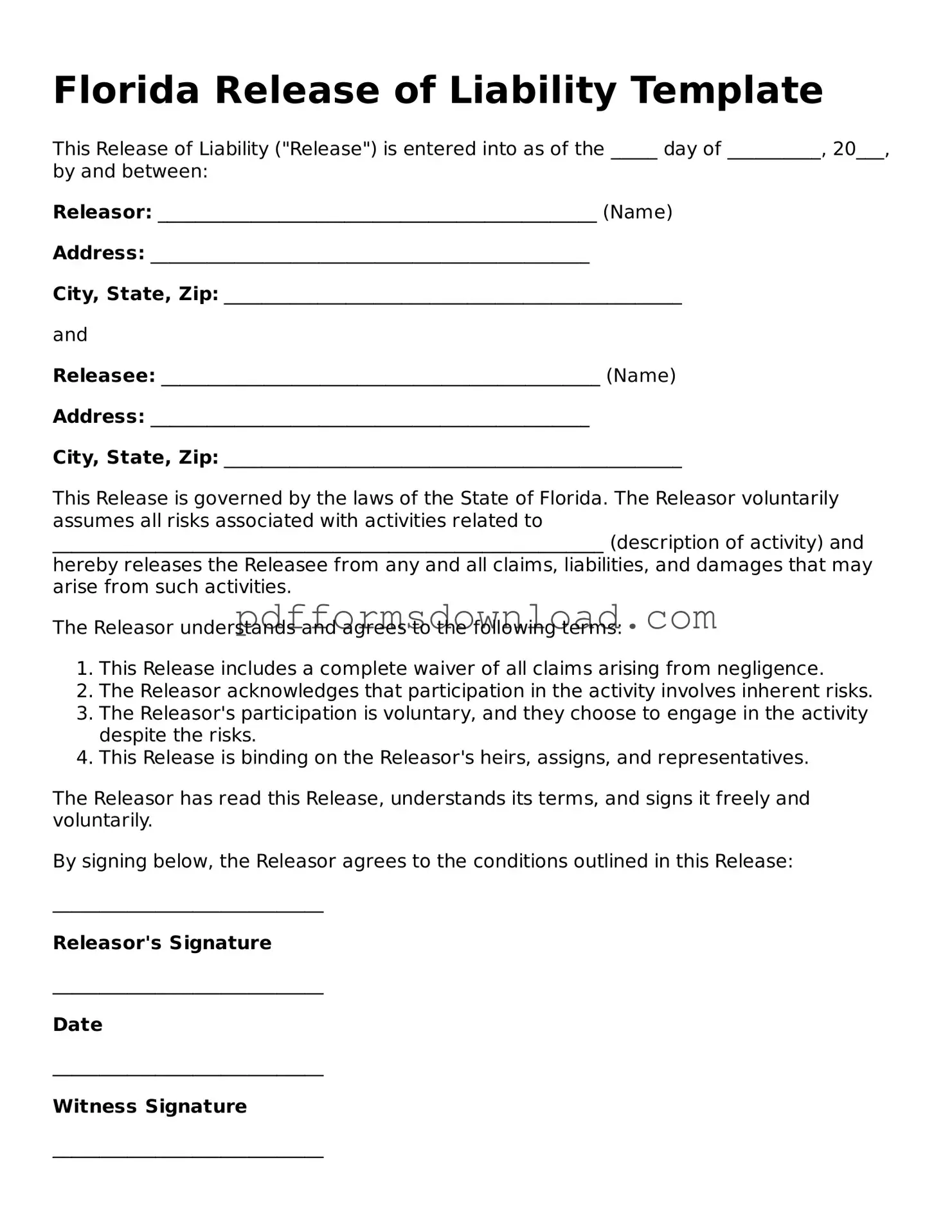What is a Florida Release of Liability form?
A Florida Release of Liability form is a legal document that helps protect individuals and organizations from being held liable for injuries or damages that may occur during a specific activity or event. By signing this form, participants acknowledge the risks involved and agree not to hold the organizers responsible for any accidents or injuries that may happen. It's commonly used in activities like sports, recreational events, and other potentially risky situations.
Who should use a Release of Liability form?
This form is beneficial for anyone organizing an event or activity that carries inherent risks. Whether you’re a sports coach, a business owner hosting a workshop, or an individual organizing a family reunion with activities, using a Release of Liability form can safeguard you against potential lawsuits. It’s a smart step for anyone wanting to minimize their legal exposure while providing a fun and engaging experience.
Is a Release of Liability form enforceable in Florida?
Yes, a Release of Liability form can be enforceable in Florida, provided it meets certain criteria. The form must be clear and unambiguous, allowing participants to understand the risks they are assuming. It should also be signed voluntarily, without coercion. However, keep in mind that courts may not enforce a release if it is deemed overly broad or if it attempts to waive liability for gross negligence or willful misconduct.
Do I need a lawyer to draft a Release of Liability form?
While it’s possible to find templates online, consulting with a lawyer is highly recommended. A legal professional can ensure that the form meets Florida’s specific legal requirements and is tailored to your unique situation. This extra step can provide peace of mind, knowing that your form is both effective and compliant with state laws.
Can minors sign a Release of Liability form?
Minors cannot legally sign a Release of Liability form on their own. Instead, a parent or legal guardian must sign on their behalf. This signature acknowledges the risks involved and agrees to the terms of the release. It’s essential to ensure that the language in the form is clear so that guardians understand what they are signing and the implications for their children.
What should I include in a Release of Liability form?
A comprehensive Release of Liability form should include several key elements. Start with a clear statement of the activity and its associated risks. Include a section where participants acknowledge these risks and agree to release the organizers from liability. It’s also wise to add a clause about the governing law, which specifies that Florida law applies. Finally, ensure there’s space for signatures and dates, capturing the consent of all parties involved.
